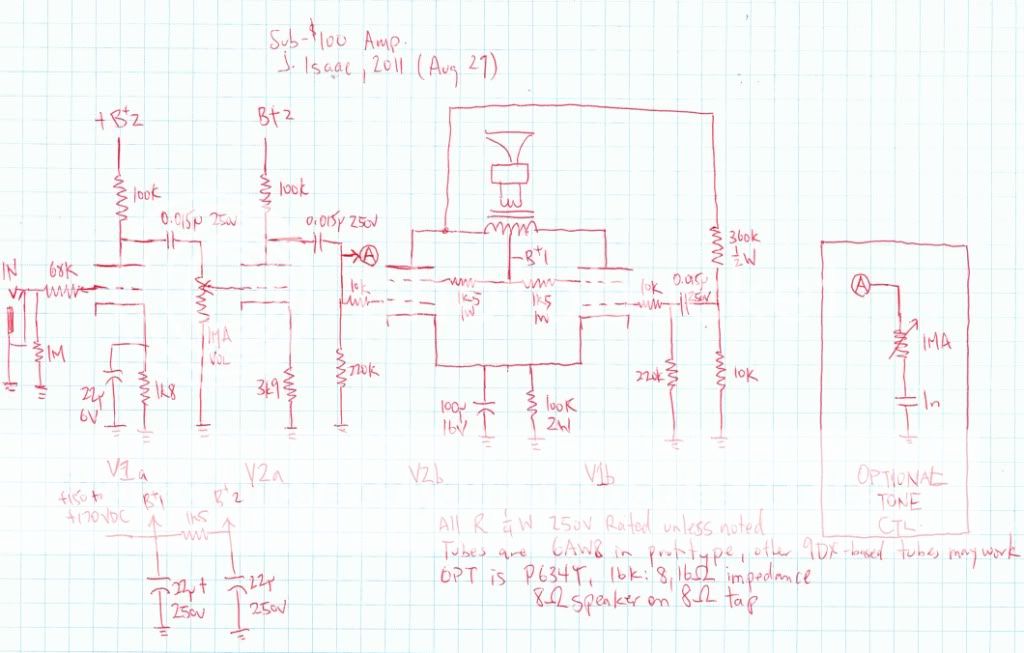
As for the stuffing... I've been heavily inspired by the good work done on the http://www.ozvalveamps.org website, especially the AVA section where they describe building an amp using off the shelf parts costing less than $200. The only thing is that every amp they have uses two or more power transformers, and that's not cheap enough for me! So I thought and searched for a way to use a single low voltage transformer for both heater and B+ supply (through a voltage multiplier). I came across the 15AF11, a tube with two nice linear triodes, a power pentode (a bit like a 50C5 only with more transconductance) and a 14.7V, 0.45A filament... two of these in series can strap across a 30V transformer, which can be quadrupled for 150V raw B+, or so the theory goes... I set to work (schematic coming - this is a gain-y creature, and it squeals a bit when maxed - this may be partly due to wire length in some places. I have to pull out my scope and go hunting.)

To the left is the quadrupler power supply on a salvaged piece of GPO-3... currently the caps are held down with hot glue but I will redo the whole board before mounting permanently in its final home. With the transformer shown (an overkill 80VA 27.5V toroid; I'm looking for a smaller unit for the final amp) giving 29VAC out the quadrupler does in fact produce 155V of pretty clean B+, although there is less plate current being drawn than I expected, so it may drop a bit in future.
The main board construction is primitive but stable - nails in a piece of wood for the tie points. All offboard wiring is colour-coded, thanks to the wiring harness from an old TV. One nice thing about the B+ being so low is that most of the parts can be 250V rated, which makes parts gathering easier. Barely visible between the two tube sockets is a conjunctive filter, which is needed to tame ringing on the output (again, long wires are not helping things!)

The amp design has two gain stages with volume and a big-muff-style tone control, followed by a paraphase inverter - so total gain from the input jack to the output tubes is something like 6000x, or 75dB... yeah, it's got gain. It sounds fantastic when it isn't oscillating!
More details and sound clips to come, when I've got some more bugs out of it...


 .
.
